Phase 4 — Mastering the Gentleman Spy Skill Set
Lesson 6 — Parkour and Climbing
LESSON 6: Parkour and Climbing
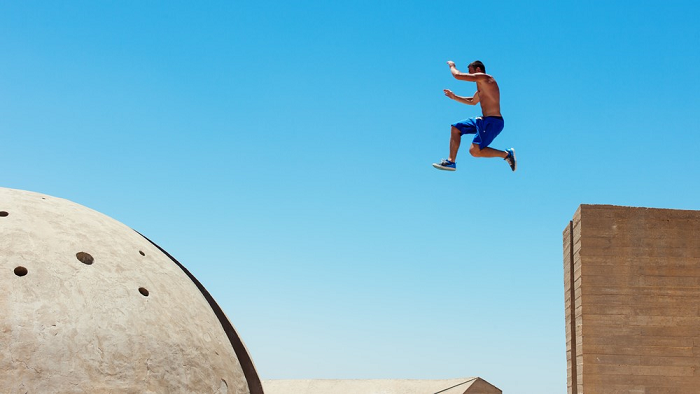
Living like a Gentleman Spy means being able to navigate your environment with ease and speed.
Parkour
A chase through the streets. Clamoring up the sides of buildings, jumping off the roofs, and rolling right back into a dead sprint. Whether it's 007 chasing a bomb maker in Uganda or Bourne running over the rooftops in Tangiers, parkour is about moving through your environment as efficiently as possible.
Running a 5k every morning might be a waste of time but being able to sprint at full speed and negotiate any obstacle in his path is a mandatory skill; one that may come in handy even if you never have to chase bad guys through crowded streets. But how do you get started?
First, check out the myriad YouTube channels, playlists, and guides that contain great information:
- American Parkour (APK)'s Parkour Guides
- Tapp Brothers How to Parkour
- American Parkour's Getting Started page
- Ryan Ford's YouTube playlists
- Ronnie Street Stunts Parkour Basics
You can begin training on your own, in an apartment, back yard, or public park, with nothing but the skills and progressions you find online.
Skills to work on include your balance, rolling, landing, precision jumps, vaults, climbing, tic-tac, and more as your skills progress.
Balance, jumping, and landing are all fairly basic skills, although you can and should practice to get better. But other valuable skills are not something we practice or use on a regular basis.
Shoulder rolls are not necessarily an everyday skill for most people but need to become second nature. Being able to fall and roll safely, when completely surprised and off-balance, will keep you safe and injury-free. Check out the video tutorials, then start practicing on a soft surface like grass, sand, or even carpet inside until you have the hang of it. From there, start from standing, and add momentum, until you can do it from a full run or jump off an obstacle.
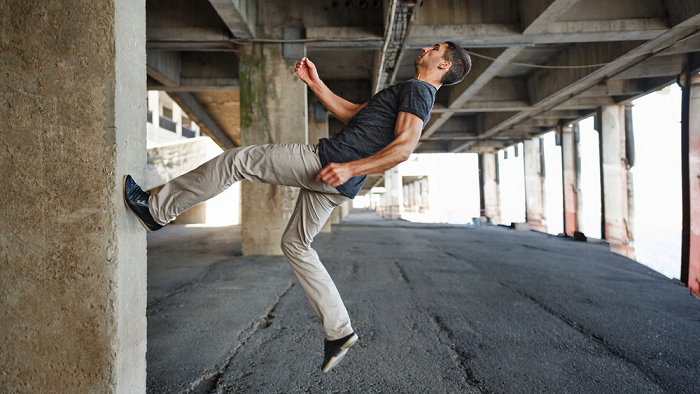
After the shoulder roll, work towards mastering at least a few of the other basic parkour moves:
You don't need to take your parkour skills to the extreme. You don't need to master all the moves on the list or be able to jump off 20-foot walls. You do need to build competency in moving through your environment as quickly and efficiently as possible.
You don't need to spend hours working on your parkour training either. A few minutes of practice can easily be integrated with (or used as a warm-up for) your weekly running workouts.
If you decide to step things up more, find a local parkour/traceur/freerunning group and start practicing with them. Facebook groups, Meetup.com, and parkour forums are great places to find people in your area to train with.
In many cities you can find dedicated parkour/freerunning gyms or facilities. These will be able to give you top quality instruction on everything from the basics of rolling and falling, through advanced moves and acrobatics if you decide to go that route.
Climbing

Like swimming and parkour, learning some basic climbing will allow you to move through your environment at will. Not everybody has access to a climbing gym, or an outdoor area suitable for rock climbing, but if you do, it is highly recommended that you learn enough to at least have a basic capacity in the vertical realm.
Many people believe that climbing is a game of strength. It is, and it isn’t. While you do need strength, especially in your grip and arms, climbing is a sport of skill and finesse. The guys that try to muscle themselves up the wall are the ones that will tire quickly and not be able to climb as difficult terrain.
In order to learn the finesse skills required of the climber, your best bet is to either take a class at your local rock gym or find an experienced guide or trainer to help you learn outside.
If you do have access to a gym, they should be able to rent you all the required equipment to get started climbing safely, and you might be able to try out different types of gear before purchasing it.
If you’re getting started outside, there are some basic equipment requirements that you need to have taken care of before you ever go on the rock. You will either need to purchase these yourself, or have a guide provide them for you to get started.
You will need:
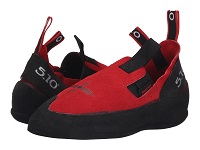
Climbing Shoes — tight fitting shoes with smooth “sticky” rubber soles and rubber that goes up over the toes and around the foot to provide better grip on the rock. These are available in different styles and shapes to cater to different climbing needs. Excellent choices are the La Sportiva Genius or Katana Lace as the best all-around climbing shoes on the market, and the Five Ten Anasazi Moccasym slip-on for beginners or comfortable gym work.
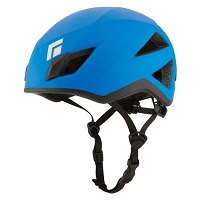
Helmet — climbing helmets are lightweight but offer great protection in case you fall, as well as protection against falling rocks from above when you’re the one belaying at the bottom. Your bike helmet, ski helmet, etc. will not work for climbing; you need a helmet that is UIAA and/or CE rated. The Petzl Elios or the Black Diamond Half Dome or Vector will do everything you could need in a helmet and work well for many endeavors, from skiing to caving.
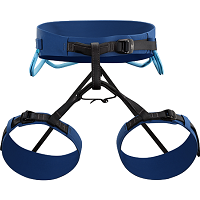
Harness — for anything other than bouldering, you will need a harness. This will have leg loops, a belt, and an area to attach a carabiner, belay device, or otherwise attach yourself to the rope. The top choices here are the Arc'teryx FL-365 or Black Diamond Chaos for pure rock and gym use. If you think that alpine, ice climbing, or ski mountaineering might be up your alley, an alpine harness like the Black Diamond Couloir or Arc'teryx AR-395 are good choices.

Chalk and chalk bag — sweaty hands will get you nowhere on the rock. Climbing chalk, kept in a chalk bag attached to your harness will keep your hands dry and in good shape for the climb.
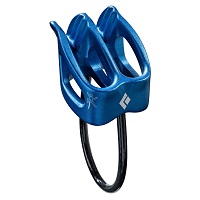
Belay device and locking carabiner — the carabiner attaches the belay device to your harness and allows you to keep whoever is climbing from falling. The most common versions are the Black Diamond ATC (preferred by many climbers) and the Petzl Grigri (most common in climbing gyms).
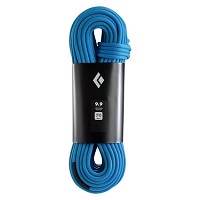
Rope — a 70-meter length of 9.2–11mm dynamic nylon kernmantle rope is what you’ll use for climbing. Non-dry rope is fine for basic sport or trad climbing. If you expect to get into ice climbing or mountaineering, you should opt for dry rope that has hydrophobic coating on the sheath and/or core to prevent moisture buildup.
Depending on where you intend to climb, there may be requirements for specific gear above (e.g. no alpine harnesses allowed in climbing gyms), or additional gear not covered (quickdraws, cams, nuts, runners, crash pads, etc.). This is especially noticeable in various indoor gyms as they may have specific requirements on the type of harness or belay devices that they require of their climbers. Contact the gym or the guide that you plan to use and get recommendations from them.
Once you have some basic instruction complete, the most helpful thing you can do is find some local climbers that you get along with and start climbing with them. This is especially helpful if they are better than you — you’ll never progress that far if you’re always the best on in your group. You need to test yourself to improve.
PROGRAM
In the next lesson...
In the first scene of the first book, James Bond was introduced in a casino. Spies and gambling have gone together ever since. From the World Series of Poker to backroom games in third world countries, Texas Hold'em is the game of choice. Learn the basics of the game, and a training progression that will take you from novice to profitable poker player in no time.
